Outsider
A
Forbidden Island Short Story
by
Lianne Simon
Genre:
Sweet Fantasy Romance, Coming of Age
In the
closing hours of World War II, an experimental weapon meant for
London struck Eilean nan Sìthean, a remote Scottish island. Within
forty-eight hours, all of the men there died. Six months later, the
few women who survived gave birth to the children of the plague—the
Fair Folk of Scottish mythology reborn.
Nearly seventy
years later, a young gold named Màiri discovers an Outsider washed
ashore—the first human she’s ever seen. Saving his life would
mean spending the rest of her days with a stranger, the sworn enemy
of her people. But she cannot let him die alone.
**
Only 99 cents!!**
Watercolor
Memories
A
Forbidden Island Novel
Anya
paints a watercolor landscape—the cherry grove that haunts her
dreams. Something happened there, but her past flows like the colors
that run down her artwork. Can she trust anything she remembers?
A
year ago, Anya was a petite blonde. Now, she’s a tall and muscular
redhead, playing soccer on a boy’s team. Her foster parents and her
caseworker insist she see a doctor about her bodily changes and her
gender issues.
To avoid medical treatment, Anya runs away from
her foster home. As the girl searches for acceptance and family, the
world around her shifts. She may find love. But will she ever have
the peace she craves?
White locks, pink eyes,
on her
mother’s breast she lies.
Blue eyes, golden braid,
gentle
girl, at home she stayed.
Redhead running through the vale,
soon
enough, he’ll think he’s male.
—Notes on Daoine Sìth
Biology
Extract from Outsider
My little she-goat often feasts on the berries that grow along the old stone fence at the edge of our pasture. I wander south toward the village, but don’t spy her anywhere. My father mended the gate to the commons, so she can’t have gone that way.
Turning north again, I begin the long trek up to Am Bàrr. From the summit I’ll be able to survey the rest of our farm, but it’s the view of the ocean that always tugs at my eyes.
To the east—just a few leagues distant—lie other islands. Silver specks rush across the ground and through the air. Niall once told me they were metal craft piloted by Outsiders—strangers who enter the change before they’re born, and who spend their entire lives as one gender.
The Daoine-Sìth love peace, but Outsiders kill without mercy any who leave our island. Their weapons target even small fishing boats that stray from our shores. How have we ever harmed them that they hate us so?
To the west a distant gray shape fades in and out of the mists. Long ago, a faraway land called Aimeireaga sent a floating island. To protect us, they said. Our elders thanked them, but insisted that God alone would our defender be. Still, they haunt our shores.
Along the coastline boulders tumble into the sea. Halfway up to Am Bàrr I find Anna, perched on an outcrop between the trail and the cliffs. She doesn’t come when I call, but I won’t follow her out on the tilted rock. Only a ruadhan would be so bold. Or so foolish.
A glance at the sun tells me I can afford to be patient. So I sit and wait for my stubborn pet to tire of her game.
Thoughts of Anna flee my mind when I gaze back down the coast toward Cladach Beag. Something looking very much like a dead body floats in the shallows.
Extract from Watercolor Memories
Faded memories of a strange dream slip away as I wake. In the gray twilight of my room I stretch and moan. All I did was run away from home. Yet I feel like—like I had a for-serious workout. Or spent the night with Dylan. Yeah. That.
My leg cramps. The bed squeaks as I push myself upright. Jazmine gave me a ride to Stepanova’s and showed me to this room in her upstairs apartment. Did I go right to sleep? Eat supper? Much as I struggle to remember, I dredge up nothing beyond an image of Jazmine’s pretty smile.
The urge to pee drives me from the bed. I flip on a light and search the room. Nothing in the antique dresser. The closet is spotless. And empty. My chest pounds syncopation. What did I do with my clothes?
A pink satin robe lies draped across the foot of the bed. A fragmented image drifts across my vision—me showering and—I run fingers through my hair. Yeah. Mousse. But I’m out of time. I grab the robe and dash across the hallway to the bathroom.
After relieving myself, I turn the makeup lights on full bright and lean close to the mirror. No trace of makeup. Okay. Nausea whispers that—whatever happened—it’s too late now. I should never have left my foster home. My heart thumps in my temples. What is wrong with me?
Jazmine’s not in the kitchen or living room, so I tap on her door and ease it open. My throat tightens when I see her movie studio of a bedroom. Lights. Cameras. Microphones. Mirrors. A certainty not supported by memory strikes me—I’ve been here before. Naked. With her. Under the bright lights. Our bodies entwined.
Scenes from an old video flicker through my brain. The ache in my legs. The small bruises. Terror flows over me like the ocean breakers in a hurricane. I flee to the living room, but a dark-haired man with Russian eyes stands between me and freedom. Where did he come from? I gasp for air. My pulse races as I succumb to his overpowering grip. “Please don’t hurt me!” I say. Almost a scream.
Extract from Watercolor Memories
Before me—and a hundred feet below—lies the ocean, its waves pounding the rocky shore. “Jump,” whispers l’appel du vide. “Be at rest.” The void tugs at the emptiness in my soul. I lean into the wind and shiver at the darkness seeping from my heart. Rain falls in earnest now. Drops stream down my face. I brush the hair away from my eyes.
“Brit!” I scream her name into the approaching storm. As much as I love Courtenay and want to help the girl, it’s my bestie that I miss. How could I have gotten so far away from her?
“Maman?” The small voice behind me doesn’t belong to my bestie. Or to anyone else I know. I turn in slow motion as my heart pounds frantic in my temples. A timid young girl with bright pink eyes and crazy white hair stands just out of reach. A moment passes before I realize how tiny she is. And how frightened. Yeah. Like me as a toddler facing an angry Kyrill.
Several yards behind the little one stand two young women and two girls. The tallest—a redhead—eyes me with love and a touch of uncertainty. The other one. Yeah. The blonde. She could be me. The petite me. Except that she’s nursing a baby. And digging it. The woman’s braid hangs down past her waist. Her smile beams reassurance.
“Ruadh Maman?” The white-haired girl in front of me holds out a shaking hand. Terror fills her eyes. “I sorry,” she says. “I taked. I give back you.”
Am I that scary to her? The girl’s leg twitches. Her eyes plead with me to please not hurt her. Not kill her family. Why me? I’m no threat. I sit on the ground in front of the kid, hoping to calm her fears. “It’s okay,” I say. After a moment, I hold out my hand.
Into my palm, she drops a glowing heart on a chain. The tension around her eyes melts. The girl turns and runs back to the blonde. “Okay now, Maman? I give back.”
The blonde says something comforting to the child. The little one scrambles up her mother’s side and digs beneath her blouse. The woman smiles at me as the others start back down the cobblestone trail. Her free hand rises. A fingertip brushes against something at her throat. Yeah. Without any doubt, the heart her mother gave her. She nods and walks away.
I watch till the group passes out of sight. Till the rain stops. And the sea mist disappears. Till there’s a roof of glass and steel above me again. I glance back toward the ocean. Though l’appel du vide still beckons, an ancient stone wall marks the end of the cobblestone pathway and of my watercolor landscape. A sigh lifts my shoulders. I’m living in a fantasy world.
Can you, for those who don't know you already, tell something about yourself and how you became an author?
I used to attend a computer conference in Phoenix each July. Twelve years ago, I skipped the last day of the breakout sessions. Instead, my husband and I drove out to Tortilla Flat in the heat of summer. The desert is lovely that time of year. We toured the area and returned to the hotel.
The next morning, I woke with a strong desire to write a novel based on my childhood. I became so obsessed about learning the craft that my husband let me quit my six-figure day job to become an author. Over the next two years, I wrote twenty or thirty drafts of my first novel. I participated in critique groups and had a wonderful writing partner to share ideas with.
I have Mixed Gonadal Dysgenesis—an intersex condition. I grew up with a body that isn’t completely male or female. As a child, I was so tiny and frail that my parents feared losing me. Because of my size and my cute pixie face, I thought that I might be part elf.
I was raised as a boy, though not capable of vaginal intercourse as a male. At nine, I was small enough to wear my six-year-old sister’s dresses. And did. My parents weren’t happy about such things, but I was never punished for gender issues. In middle school, however, I fell in love with a boy, and we moved to another state.
Confessions of a Teenage Hermaphrodite (not my first choice for a title) begins with the sixteen-year-old Jamie at college, far away from home. Jamie considers herself a girl, but is living as a boy because her parents want her to. If you want to know what my childhood was like, that’s a place to start. The novel’s not autobiography, but perhaps you’ll understand what it was like to be me as a child.
What is something unique/quirky about you?
I have to have a close emotional bond with my main character in order for my writing to flow. I don’t outline because I’m not sure what the character’s going to do. My characters determine the plot.
Tell us something really interesting that's happened to you!
My father was a spook. Not a spy, but one of those people who spent his career working on secret projects. For a while, during the cold war, he had to take his turn staying inside Site R—the Raven Rock Mountain Complex—a nuclear bunker. So that, if we fought World War III, my dad would still be alive afterward, to fix whatever was left of the military’s equipment.
Because of my father’s work, I got to watch some of the test flights of new military rockets. The program was supposed to be secret, but our teachers would take us all outside just before a launch, so we could watch from a distance. Way cool. Some shook the ground beneath us. Others were too fast to follow with our eyes. All we saw was the trail they left.
What are some of your pet peeves?
When people think one size fits all. When people get mad at you without bothering to find out why you’re doing something differently than they are.
I have a neurological condition that results in bronchospasms when I wear a mask. The longer I keep one on, the more difficult it becomes to get enough oxygen. I get light-headed. I get tunnel vision. So I can’t wear one for more than about ten minutes. The airlines won’t let me fly without a mask. So I’m grounded until the corona virus passes.
Where were you born/grew up at?
I was born in Illinois. My grandparents owned a dairy farm near the Joliet Federal Penitentiary. When I was nine, my family moved to Springfield. After that, we moved every few years. I attended two grade schools, two middle schools and three high schools.
If you knew you'd die tomorrow, how would you spend your last day?
I’d spend the day with my husband, chatting about how much the Lord has blessed my life.
What kind of world ruler would you be?
I’d be horrible. I hate confrontation. I don’t like telling other people what to do. And I don’t like making up rules for people to follow. “Leave me alone!” is one of my mottos. I was that kid in your high school classes who rarely spoke with anyone but who always managed to break the grading curves. I spent my time reading. Daydreaming. Wandering out in the woods. Dancing alone under the moonlight. World ruler? I think not.
What are you passionate about these days?
A friend and I formed Intersex & Faith, a 501c3 whose mission is to help communities of faith to minister to those born with a body that’s not clearly male or female. We hope to do that through advocacy, education, and support. We filmed Stories of Intersex and Faith, a documentary that examines how some people reconcile their faith with having an intersex body.
What inspired you to write this book?
I have spent quite a bit of time studying the foster care system, juvenile courts, and the rights—or lack thereof—of children in the legal system. The book was not originally going to be a fantasy, but the more I read about what some children go through, the more I wanted a story that could have a happy ending. So when Anya told me that she belonged in the alt-history fantasy world of my short story, Outsider, I agreed to move the tale there.
What can we expect from you in the future?
I have another Forbidden Island short story in the works.
Outsider is a Forbidden Island short story. Watercolor Memories is a Forbidden Island novel. Are they part of a series?
Not in the usual sense. Watercolor Memories and the Forbidden Island short stories share a few characters, but are otherwise independent.
The Forbidden Island lies off the west coast of Scotland. It’s been under a strict military quarantine since World War II. The island’s name in Gaelic is Eilean nan Sìthean, which translates as “Island of the Fairy Mounds.” Indeed, before the war, it was known for the burial mounds of the Fair Folk—the Daoine-Sìth, which literally means “people of peace.”
The Fair Folk were long dead when World War II began, humans having killed them off. All that remained were the stories in Scottish lore, the earthen mounds, and the occasional claims of unusual animal sightings in the area.
Toward the end of World War II, a biological weapon meant for London veered off course and struck Eilean nan Sìthean. Within forty-eight hours, the ensuing plague killed all of the men and most of the women on the island. The military was so concerned that it killed the few people who tried to escape the island. To this day, the governments around the world insist on a complete quarantine. Even small fishing boats near the shore of the island are targeted.
Six months after the biological weapon struck Eilean nan Sìthean, the survivors bore the children of the plague—the Fair Folk reborn. They were tiny, frail babies with large pink eyes and white hair, more doll-like than human in appearance. By that time, it was apparent that the plants and animals on Eilean nan Sìthean had also become new species.
The new Daoine-Sìth were unusual in that the children all appeared to be female. A few years later, they went from white hair and pink eyes to blonde hair and blue eyes. In their teens, they changed again, to red hair and green eyes. At that point, the children became much more active, even aggressive at times.
Over the years, the military has attempted to collect enough information for the scientists to better understand the Daoine-Sìth. Unfortunately, none of the reconnaissance parties have survived, apparently due to the plague.
Approximately sixteen years after the war, additional children were spotted by the drones that patrol the island. Based on several Daoine-Sìth bodies that were examined, the CDC conclude that the redhead teens can mate with each other, one giving birth to children and the other nursing them.
In a few cases, Daoine-Sìth children have somehow appeared among the humans, far from the island. As they are a threat to the human race, they are held in Biosafety Level 4 containment facilities or are disposed of. The blood of a redhead Daoine-Sìth is invariably fatal to humans.
Do you have any “side stories” about the characters?
How did you come up with the concept and characters for the book?
Where did you come up with the names in the story?
My husband grew up in Erie, Pennsylvania. His father was Russian Orthodox. After I realized that Anya’s parents were recent immigrants who started out in Erie, I started looking at Russian names and naming conventions. Anya’s father was Kyrill Gilyov. That meant Anya’s surname would be Gilyova and her middle name Kyrillovna. Russian given names have different forms. Anna is formal. That’s on her birth certificate. Her friends would call her Anya. Close friends, family, and lovers would call her Annushka.
Naming Ms. Brigitte Peta Andrews took a little work. She’s related to another character who is in both Outsider and Watercolor Memories. Her name is Peadar Brìghde Aindréas. Brit—Bridgitte Peta Andrews. Brìghde Aindréas is the Scottish Gaelic form of Bridgitte Andrews
What did you enjoy most about writing this book?
My talks with the characters.
Tell us about the main characters in Watercolor Memories. What makes them tick?
Anna Kyrillovna Gilyova—Anya to her friends—is a girl in foster care who’s about to turn sixteen. In the past year, she’s gone from petite blonde to tall and muscular redhead, playing soccer on a boys’ team. Because of her bodily changes and her supposed gender issues, she’s being forced into medical and psychological exams. Anya’s father was abusive and killed her mother, so she has no one. All that Anya wants is a family that will accept her the way she is. Her biggest fear is dying alone.
Ms. Bridgitte Peta Andrews, Anya’s best friend, calls herself Brit. She’s a total femme, but still doesn’t like the name her parents gave her. She lives her single mom. Brit’s supportive of Anya, and always encouraging her. But because she’s gay, and because Anya sometimes spends the night at the Andrews’ home, the court issues a No Contact Order to keep the two girls apart. Brit’s heartbroken, more for her bestie than for herself.
Courtenay Dubois—if she exists outside of Anya’s mind—is a cute redhead girl—perhaps seventeen or eighteen—who claims to be Daoine-Sìth. One of the Fair Folk. An elf, though she looks human enough. She spent much of her childhood alone and is terrified that Anya will reject her.
Jazmine Lamont—a young woman in her twenties who works for a human trafficker. She watches over some of the girls. Makes porn for her bosses. Grooms little girls. But she’s just trying to make the best of the hand she’s been dealt, and, in the end, helps Anya when she can.
How did you come up with the title of your first novel?
My first book was a semi-autobiographical coming-of-age novel about a sixteen-year-old intersex kid in college who is trying to work through their gender issues. The story’s set in the early 1970s, a time when such children had fewer options than today. As a child, Jamie had switched to living as a girl, but when the school board discovered that she was being home schooled—illegal at the time—and that her birth certificate said male, she had to return to living as a boy. She’s still living as a boy in college, but is physically petite and feminine. My first title for the book was Faie, a Middle English word meaning enchanted. Jamie’s childhood image of herself as an elfin princess is one of the book’s themes. My second title—Growing Up Intersex—was intended to be a bit more clear. I had no success with that title. The third was made half in jest—Confessions of a Teenage Hermaphrodite—but that’s the one my publisher settled on.
Who designed your book covers?
The illustration on the cover of Watercolor Memories was drawn by an artist at Mibl Art. I built the cover for Outsider using stock images and fonts.
If you had to do it all over again, would you change anything in your latest book?
That’s an interesting question. Watercolor Memories is a story about unreliable memories and shifting realities. It could be expanded into a number of different stories. But this is where the main character took it. There’s more to write about this world and the main character, so perhaps some of the scenes that were removed from Watercolor Memories actually belonged in another book.
Did you learn anything during the writing of your recent book?
Yes. I was struggling to make progress with the story when the main character told me I was trying to write her into the wrong world. She belonged in the alternate universe about which I’d written in an earlier short story. I was a bit surprised because it changed the genre of the book. But she was right.
If your book was made into a film, who would you like to play the lead?
Anything specific you want to tell your readers?
How did you come up with name of this book?
What is your favorite part of this book and why?
In Watercolor Memories, I like it when Anya puts together enough of her past to finally understand who she is, but realizes that the peace she craves won’t be easy to find. Her best friend becomes more important to her than the solutions to her own problems.
If you could spend time with a character from your book who would it be? And what would you do during that day?
Are your characters based off real people or did they all come entirely from your imagination?
Some of my characters were inspired by real people, but usually they’re a mix of attributes from a number of different people.
Do your characters seem to hijack the story or do you feel like you have the reigns of the story?
My characters definitely do what they want.
Convince us why you feel your book is a must read.
Have you written any other books that are not published?
I have a short story that’s in progress. Watercolor Memories is my third novel.
If your book had a candle, what scent would it be?
What did you edit out of this book?
What are your top 10 favorite books/authors?
A Little Princess - Frances Hodgson Burnett
The Faded Sun Trilogy – C. J. Cherryh
The Dosadi Experiment, Whipping Star – Frank Herbert
Cryptonomicon – Neal Stephenson
Fair Sunshine – Jock Purves
The Mistborn series – Brandon Sanderson
The Left Hand of Darkness – Ursula LeGuin
The Boxcar Children – Gertrude Chandler Warner
The Null-A Trilogy – A.E. Van Vogt
The Morphodite Trilogy – M.A. Foster
How long have you been writing?
About ten years.
Do the characters all come to you at the same time or do some of them come to you as you write?
Usually, the two main characters are known to me from the beginning.
What kind of research do you do before you begin writing a book?
I enjoy background research. For Watercolor Memories, I spent hours reading about children in the foster care system, how runaways are handled, what rights the kids have (or don’t), and what happens in court. I studied the are where the main character lived, including their neighborhood, the surrounding towns, parks, and school systems. I chose real homes for the main character and her best friend. Since Anya’s mother was Russian Orthodox, I read about their beliefs and practices. I asked people to look at the Russian, French, and Gaelic that I was using. And I read articles on Scottish lore. I wander when I do research, and follow interesting links. I love to learn and what I read doesn’t always end up in the book I’m writing. But I may return to it in another book.
Do you see writing as a career?
No. Writing is therapy. Yes, I’ve made money as an author, but my income from sales in China is more than in the US. My speaker’s fees have been more than my publishing advances. But I try to price my books as low as I can, and I give away loads of them. I’m not driven by fame or fortune, but I do get a thrill when someone so enjoys my writing that they drop me a nice note. I write the kinds of books that I would have enjoyed when I was young. I publish them because I know there are others out there who appreciate them. Reading lets my imagination take flight. Writing helps me land safely on the other side.
What do you think about the current publishing market?
For a long while, it’s been very difficult to break into writing as a career. If you’re interested in having your work published, I’d encourage you to continue to work on your writing and your platform. Enjoy creating stories, but learn the craft well before trying to find a publisher. Find another aspiring writer to bounce your ideas off of and to hold you accountable. Never give up.
Do you read yourself and if so what is your favorite genre?
Yes. I read. But not as much as I’d like to. My reading is mostly split between History and Fantasy.
Do you prefer to write in silence or with noise? Why?
Do you write one book at a time or do you have several going at a time?
If you could have been the author of any book ever written, which book would you choose?
Pen or type writer or computer?
Type it in. Print it. Mark it up by hand. Do the edits. Print. Repeat.
Tell us about a favorite character from a book.
What made you want to become an author and do you feel it was the right decision?
A day in the life of the author?
Advice they would give new authors?
Describe your writing style.
What makes a good story?
For me, it’s all about character development. I want to meet someone interesting and walk beside them for a time.
What are they currently reading?
I just finished Recovering from Biblical Manhood and Womanhood by Aimee Byrd. Excellent book.
What is your writing process? For instance do you do an outline first? Do you do the chapters first?
What are common traps for aspiring writers?
I’m an intuitive writer. So the books that talked about planning and outlining and character arcs sucked me dry. When I participated in writing groups, I discovered that they weren’t much help to me. I needed a critique partner—a friend who would gently suggest improvements. I read about writing query letters only to discover that very few agents actually read them. Most of the “how to” things either didn’t work for me or didn’t seem to apply to real life. I had to find my own way.
What is your writing Kryptonite?
There are days when I’m tired just waking up in the morning. There are days when I don’t have the emotional reserve to read reviews or even think about writing. So I need to find something else that will help me recharge.
Do you try more to be original or to deliver to readers what they want?
I write what I know. My ancestry’s Scottish, English, Irish, and Danish. My body’s intersex. I was small and frail as a child with a cute pixie face. I looked like a girl but was raised for a time as a boy. My puberty was late and came out of a bottle. I have asthma, dysautonomia, and Ehlers Danlos. My IQ is in the genius range, but I’m neuro-atypical. I’m intuitive. I adapt rather than plan. I’m a dreamer. All of those things contribute to my writing. And my writing hopes to make you feel something that you otherwise might not.
If you could tell your younger writing self anything, what would it be?
Let go. Forget what anyone else thinks about your imagination. Admit that you’re crazy. All the best people are. Embrace the stories that inhabit your dreams. You’ll find healing there.
What’s the most difficult thing about writing characters from the opposite sex?
My main characters are either intersex or in a close friendship with someone who is. I’ve never tried to write as someone who is purely male or female.
How long on average does it take you to write a book?
Two to five years.
Do you believe in writer’s block?
No. And I’m hoping to never meet him again. The problem I have is that I can only write when I’m in sync with the main character. That’s not something I can do spontaneously. Nor plan it out. She has to be ready to write, and I do as well. Sometimes we’ll talk about the book. Sometimes we don’t. But when we’re ready, our writing bleeds out of my heart onto the paper.
Lianne
Simon’s father was a dairy farmer and an engineer, her mother a
nurse. She grew up in a home filled with love and good books.
Tiny
and frail, Lianne struggled physically, but excelled at her studies.
In 1970, she was awarded a scholarship to the University of Miami,
from which she graduated in 1973. Fond memories of her time there
remain with her.
Some
years later, after living in several states, and spending time
abroad, Lianne settled in to the suburbs north of Atlanta, where she
now lives with her husband and their cat.
While
seeking answers to her own genetic anomalies, Lianne met a family
whose daughter was born with one testis and one ovary. As a result of
that encounter, she spent more than a decade answering inquiries on
behalf of a support group for the parents of such children.
Lianne
hopes that writing this book will, in some small way, contribute to
the welfare of children born between the sexes.
Follow the tour HERE for special content and a giveaway!
$20
Amazon giftcard,
ebook of Confessions of a Teenage Hermaphrodite,
ebook of A Proper Young Lady – 1 winner each!
Join us on the Promotion Tour with Guest Post & #Giveaway
#forbiddenisland #ya #sweetromance #fantasy #kindleunlimited #onsale #liannesimon


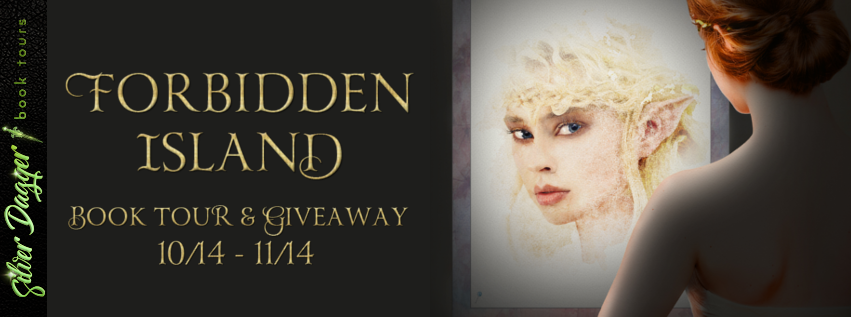
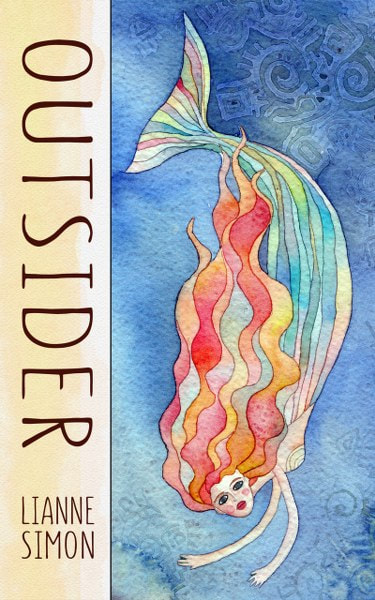

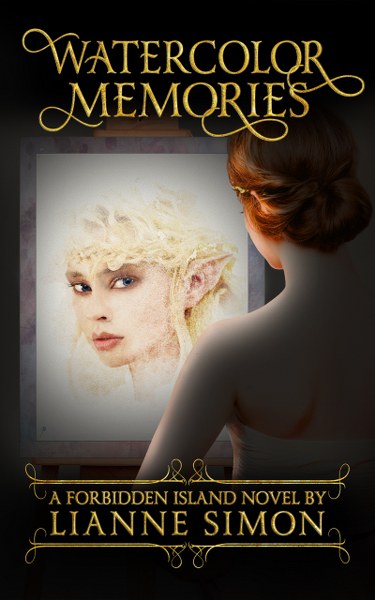



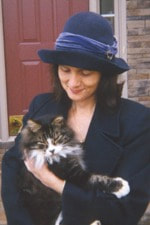

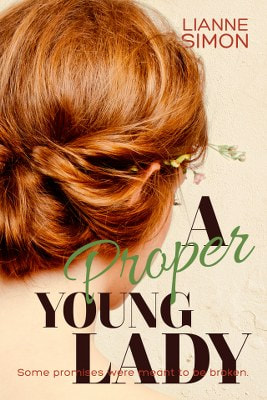
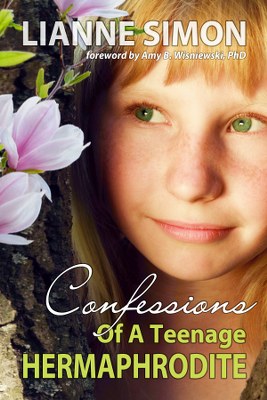
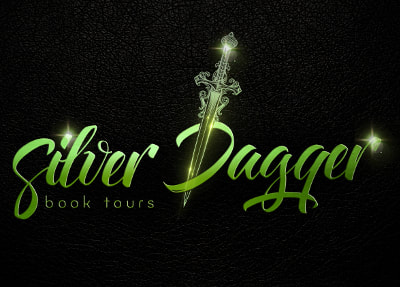
Comments
Post a Comment